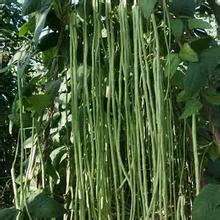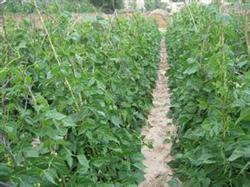Sowing methods and cultivation techniques of soybeans

The varieties of early, middle and late maturity were selected with excellent seeds and high yield. The main varieties are purple oil bean, ground oil bean king, big horseshoe oil bean, peanut oil bean, August green, precocious oil bean, late oil bean and so on. 1. Sowing method (1) Seedling raising: the greenhouse nutrient bowl should be used to raise seedlings in the greenhouse in early spring, and the seedling raising time is the beginning of March. (2) preparation of bed soil: use 60% field soil, 30% rotten organic fertilizer, 10% rotten large manure noodles, and then heat and disinfect the prepared bed soil. (3) seed treatment: select large full seeds when sowing, soak the seeds with 1% formalin 20min, and then wash them with clean water. (4) accelerating germination: 2-3 days before sowing, soaking in clean water for 3-4 hours, accelerating germination under the condition of 30 ℃, and sowing when the seeds germinated. (5) sowing: pour the nutrition bowl with water, after the water seeps, put 3-4 seeds in each nutrition bowl and cover the soil with 1.5cm. (6) temperature management at seedling stage: 20 ℃ ~ 25 ℃ in daytime, 15 ℃ ~ 16 ℃ at night before emergence after sowing, 15 ℃ ~ 20 ℃ in daytime and 13 ℃ at night after emergence. (7) Water management at seedling stage: kidney bean seedlings are more tolerant to drought. After emergence, proper water supply is provided according to seedling growth and soil moisture conditions, neither too dry nor too wet. (8) timely planting: when the soil temperature in the shed is above 10 ℃, it is usually in the first and middle of April. (9) planting density: plant row spacing 30cm × 60cm, seedling protection 120000 ~ 150000 plants per hectare. two。 Field direct seeding cultivation techniques (1) selection of land and stubble selection of wheat stubble or corn stubble with organic matter ≥ 3%, try to avoid continuous stubble, turn and rake in summer and autumn, rake stubble deep loosening and ridging, and reach the sowing state. (2) timely sowing, reasonable close planting and timely sowing: when the temperature is stable through 8 ℃ ~ 10 ℃, the seeds are usually sowed in early May. After soaking the seeds in warm water for 3 hours before sowing, the seeds are removed and placed under the condition of 3 ℃ to accelerate germination. When the seeds are about to sprout, sow when the soil is dry, sow in water and cover with plastic film after sowing. Reasonable close planting: according to different varieties, plant row spacing is also different, late-maturing varieties should have larger plant-row spacing, and early-maturing varieties should be more dense. Generally, the plant-row spacing is 30cm × 60cm, and 6000000 seedlings are preserved per 667m2. (3) applying 30 000 kg organic fertilizer, biological fertilizer 300kg, biological potassium 15kg and biological phosphorus 15kg per hectare. When the bean is stretching, the liquid biological potassium 7.5kg per 667m2 can not only promote the rapid growth of seedlings and pods, but also promote the early ripening and early yield of kidney beans. 3. Strengthen field management (1) after seedling emergence, ploughing should be carried out to loosen the soil, which is beneficial to the increase of soil temperature and promote the growth of root system. (2) Irrigation and topdressing are often dry in spring. In order to ensure the moisture needed for seed germination, the soil should be watered during sowing. Generally, there is no irrigation after the seedlings are unearthed to before flowering. In case of drought, they can be irrigated properly, but not too much, so as to avoid excessive growth of stems and leaves. After entering the flowering and fruiting period, kidney beans need a lot of water and nutrients, combined with field management, foliar fertilizer spraying can also be carried out. (3) the phenomenon of flower drop will be prevented when the temperature is more than 30 ℃ or the soil is too dry and wet, the nutrient is insufficient and the light is weak in the windy weather, so the field management should be strengthened to prevent the flower and fruit from falling. The experiment shows that the application of biological potash fertilizer can reduce the occurrence of flower and fruit drop.
- Prev

Planting beans to prevent "three insects"
The peak growth period of long bean is in the season of high temperature and more Rain Water, and the occurrence of diseases and insect pests is serious. If the management can not keep up, it is easy to reduce the quality and yield. In the prevention and control measures, agricultural control should be given priority to, supplemented by chemical control, to ensure the quality and safety of products. First, rust occurred from August to September, mainly.
- Next

Regulating plants, raising leaves, replenishing fertilizer and water to promote more pod setting of beans
The market of beans is good this year, and the price is still above 2 yuan per jin. Many vegetable farmers are only greedy, because many beans are very difficult to sit on pods, even if they are only defective pods, which are worthless at all. However, recently, the author saw the beans planted by Zhang Huaqing in Dongxia Town, Qingzhou City.
Related
- Where is it suitable to grow horseradish in China? it is expected to see the middle altitude horseradish in Alishan.
- How to prevent tomato virus disease reasonably? (Control methods included)
- Many people like to plant towel gourd on the balcony. What are the main points of this method and management?
- What crops can chili peppers be mixed with?
- Fertilization techniques and matters needing attention in Tomato
- What are the grafting techniques for peach seedlings in spring?
- Harm and control methods of root swelling disease of Chinese cabbage
- What are the pests of sweet potatoes? How to prevent and cure it?
- Symptoms, causes and Control methods of navel Rot in Tomato
- The cause of "Cucumber rotten bibcock" in Farmers' planting Cucumber and its Control Plan

